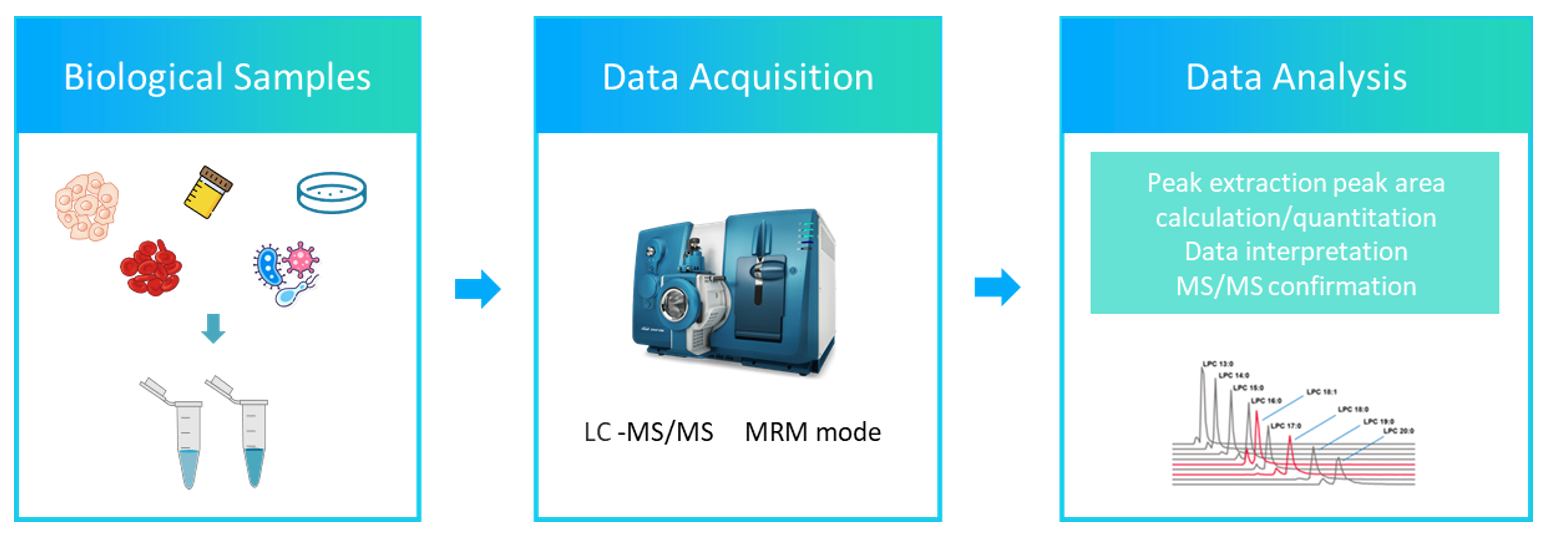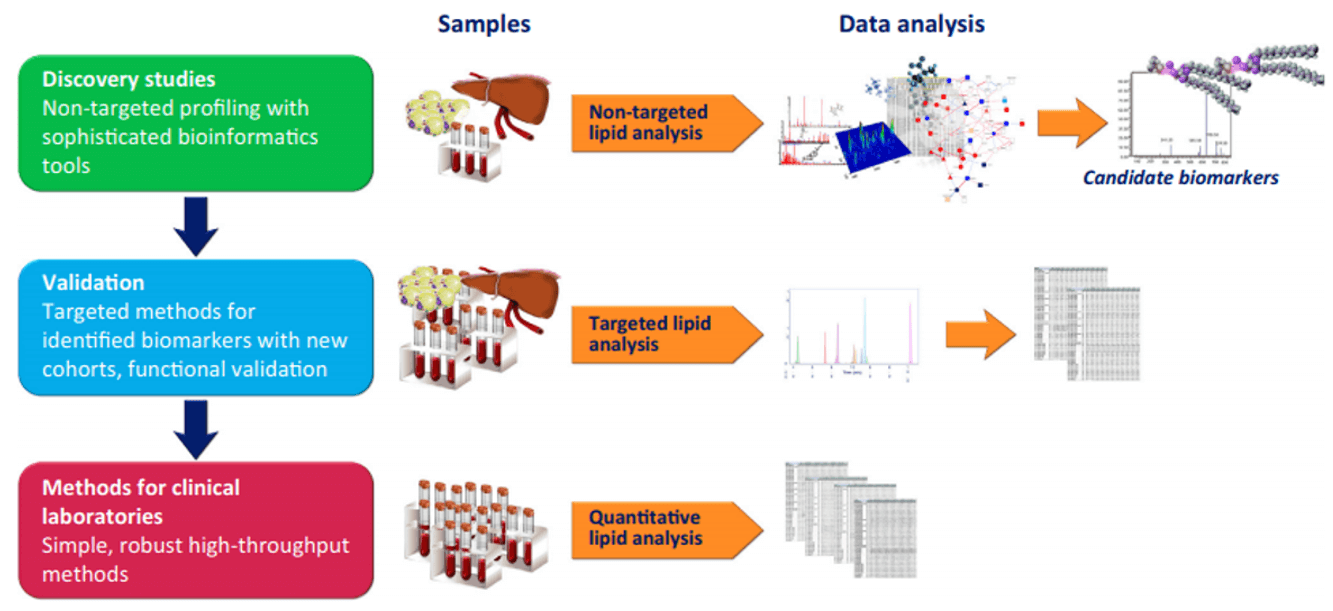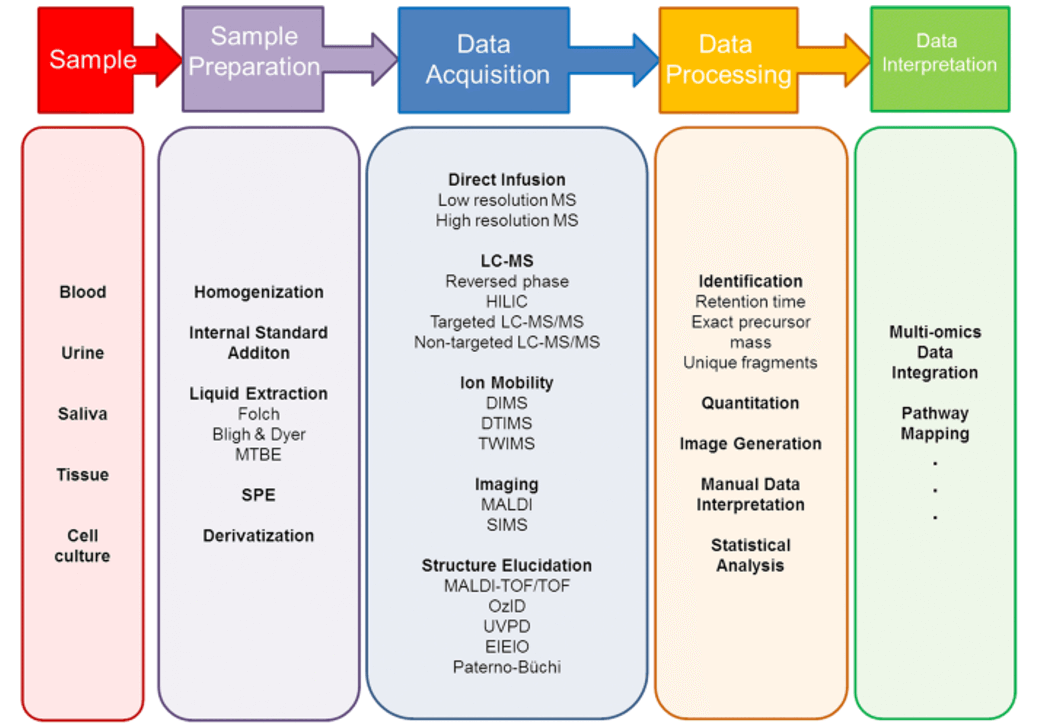Triglyceride (TAG) Analysis Service
What is Triglyceride?
Triglycerides, also known as triacylglycerols (TAG), are a type of lipid molecule that serves as the primary storage form of fat in both animals and plants. They play a vital role in energy metabolism, providing a concentrated source of energy for various physiological processes.
The structure of a triglyceride molecule consists of a glycerol backbone esterified with three fatty acids. Glycerol is a three-carbon alcohol, and the fatty acids are long hydrocarbon chains with a carboxyl group at one end. The fatty acids can vary in length, saturation (the presence or absence of double bonds), and the specific types of fatty acids present.
Triglycerides are synthesized through a process called esterification, where the glycerol molecule binds with the fatty acids through ester bonds. This synthesis occurs primarily in the liver and adipose (fat) tissue. Once synthesized, triglycerides are either stored as fat in adipose tissue or transported through the bloodstream to other tissues where they can be utilized as an energy source.
Triglycerides are a major component of dietary fats and oils and are obtained through the consumption of foods rich in fats. They are also synthesized within the body from excess calories, particularly from carbohydrates and dietary fats. Elevated levels of triglycerides in the bloodstream, known as hypertriglyceridemia, can be associated with various metabolic disorders, such as obesity, diabetes, and cardiovascular diseases.
Triglyceride analysis involves quantifying and characterizing the specific types and amounts of triglycerides present in biological samples, food products, or other relevant substances. This analysis provides valuable information for research, nutritional assessment, quality control, and various industrial applications.
Triglyceride Analysis Services at Creative Proteomics
Triglyceride Profiling
We perform in-depth profiling of triglyceride species present in various sample types, including biological fluids, tissues, and food products. Our analysis provides detailed information about the composition and distribution of triglyceride molecules, enabling a comprehensive understanding of lipid metabolism and related biological processes.
Quantification of Triglyceride Levels
We offer precise quantification of triglyceride levels in biological samples, such as serum, plasma, and tissues. This quantitative analysis helps researchers and clinicians assess lipid homeostasis, monitor changes in triglyceride levels under different conditions, and evaluate the effectiveness of interventions or treatments.
Characterization of Triglyceride Subspecies
Creative Proteomics specializes in the identification and characterization of specific triglyceride subspecies. Through advanced mass spectrometry-based techniques, we can distinguish between different fatty acid compositions, chain lengths, and degrees of saturation within triglyceride molecules. This information aids in understanding the functional and physiological implications of specific triglyceride subspecies.
Structural Analysis of Triglycerides
Our services include the elucidation of triglyceride structures, providing insights into the positional distribution of fatty acids on the glycerol backbone. This structural information is crucial for understanding the physical properties, enzymatic activity, and metabolic fate of triglycerides in various biological systems.
Triglyceride Stability and Oxidation Studies
Creative Proteomics offers specialized analysis to assess the stability and oxidative status of triglycerides. By monitoring changes in triglyceride composition and oxidative products over time, we can evaluate the susceptibility of triglycerides to degradation, rancidity, and lipid peroxidation, which is essential for quality control in food products and the study of lipid oxidation mechanisms.
Triglyceride Analysis in Adipose Tissues
We provide adipose tissue-specific triglyceride analysis services, focusing on the characterization and quantification of triglycerides in fat depots. This analysis aids in studying adipocyte biology, lipid storage dynamics, and the role of adipose tissue in metabolic disorders.
Triglyceride Analysis in Animal Models
Our expertise extends to triglyceride analysis in animal models, including mice, rats, and other species. We offer tailored services to study triglyceride metabolism, lipid droplet dynamics, and lipid-related diseases in preclinical research settings.
Analysis of SOS and SSO Triglyceride Subclasses
In addition to general triglyceride analysis, Creative Proteomics specializes in the analysis of specific triglyceride subclasses, namely SOS (Saturated, Oleic, Saturated) and SSO (Saturated, Saturated, Oleic). These subclasses provide valuable insights into the distribution and metabolism of different fatty acids within triglyceride molecules.
SOS triglycerides consist of a glycerol backbone esterified with two saturated fatty acids and one oleic acid. By analyzing SOS species, we can determine the proportions of saturated fatty acids (such as stearic acid or palmitic acid) and oleic acid within the triglyceride structure. This analysis helps in understanding the effects of specific fatty acid combinations on triglyceride metabolism, lipid droplet formation, and associated metabolic disorders.
On the other hand, SSO triglycerides are characterized by a glycerol backbone esterified with two saturated fatty acids and one oleic acid. The analysis of SSO species allows us to investigate the distribution and relative amounts of different saturated fatty acids (e.g., palmitic acid, stearic acid) and oleic acid within triglycerides. This information is particularly relevant in studying the impact of saturated fatty acid profiles on triglyceride synthesis, lipolysis, and lipid-related diseases.
Triglyceride Analysis Platforms and Instrument Models
Mass Spectrometry-Based Platforms
Creative Proteomics employs mass spectrometry as the primary analytical technique for triglyceride analysis. Mass spectrometry offers unparalleled sensitivity and specificity, allowing for the identification and quantification of individual triglyceride species within complex biological samples.
- Liquid Chromatography-Mass Spectrometry (LC-MS)
LC-MS is a widely adopted platform for triglyceride analysis due to its versatility and robustness. It combines the separation power of liquid chromatography with the detection capabilities of mass spectrometry, enabling the characterization of complex triglyceride profiles.
 Fig 1. The workflow of triacylglycerol analysis service.
Fig 1. The workflow of triacylglycerol analysis service.
- Gas Chromatography-Mass Spectrometry (GC-MS)
GC-MS is particularly suitable for the analysis of volatile and semi-volatile triglycerides. This platform utilizes gas chromatography to separate triglyceride species based on their volatility, followed by mass spectrometry for detection and quantification.
Instrument Models
At Creative Proteomics, we employ cutting-edge instrument models to ensure the highest quality and efficiency in triglyceride analysis.
- Triple Quadrupole Mass Spectrometers: These instruments offer exceptional sensitivity and selectivity, making them ideal for targeted triglyceride analysis and quantification.
- High-Resolution Mass Spectrometers: By achieving high mass accuracy and resolution, these instruments enable comprehensive characterization and profiling of complex triglyceride mixtures.
- Ion Mobility Mass Spectrometers: With the ability to separate ions based on their size, shape, and charge, ion mobility mass spectrometers provide an additional dimension of information for in-depth triglyceride analysis.
Sample Requirements of Triglyceride Assay
To ensure accurate and reliable triglyceride analysis, proper sample preparation and handling are essential. Creative Proteomics accepts a wide range of sample types for triglyceride analysis, including:
- Serum/Plasma Samples: These samples are commonly used to assess triglyceride levels in clinical and research settings. We recommend a minimum sample volume of 100 μL for optimal analysis.
- Tissue Samples: Triglyceride analysis in tissues allows for the investigation of fat deposition and metabolism. Depending on the tissue type and research objectives, we suggest submitting a minimum of 50 mg of tissue.
- Food Products/Oils: To evaluate the composition and quality of food products and oils, a representative sample of at least 5 grams is typically required.
Our team of experts is available to assist in sample collection, storage, and transportation, ensuring the preservation of sample integrity and the generation of reliable data.
* Our services can only be used for research purposes and Not for clinical use.
Services:
Resource:
Platform:


 Fig 1. The workflow of triacylglycerol analysis service.
Fig 1. The workflow of triacylglycerol analysis service.



